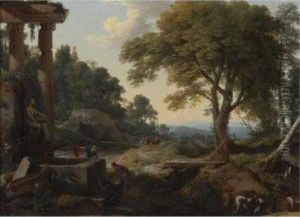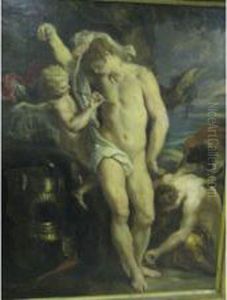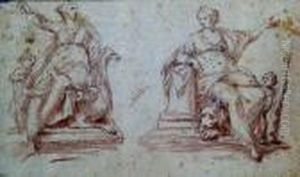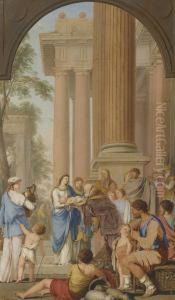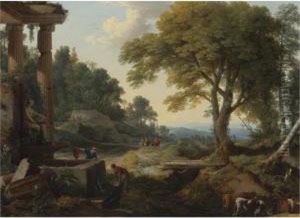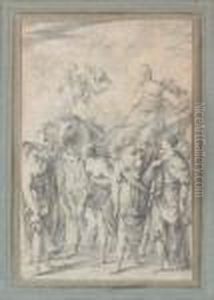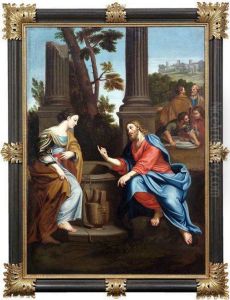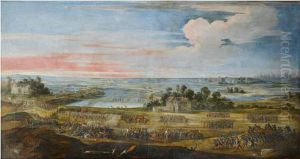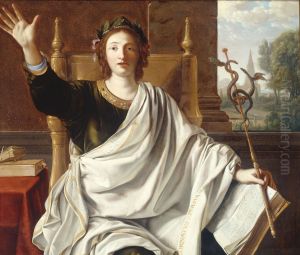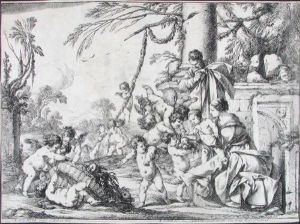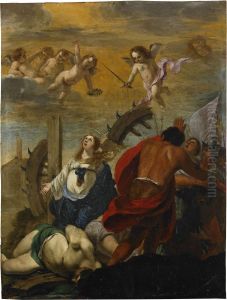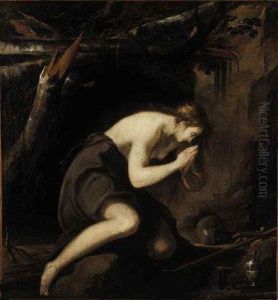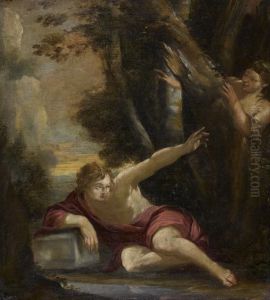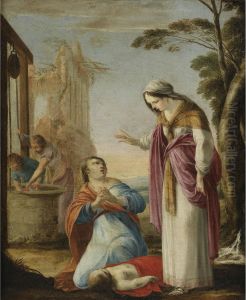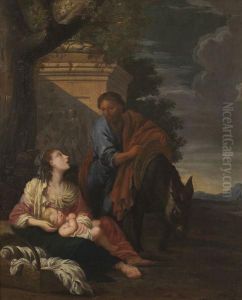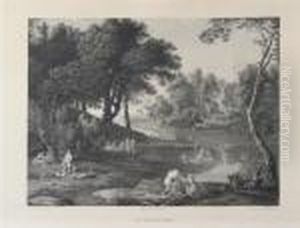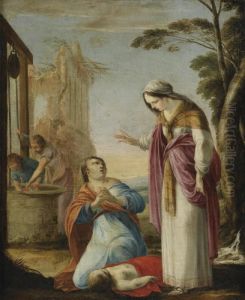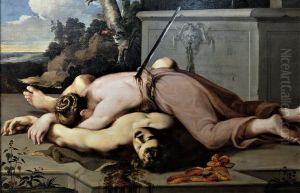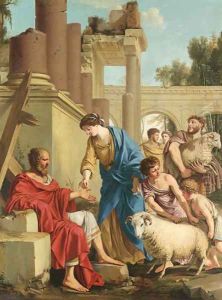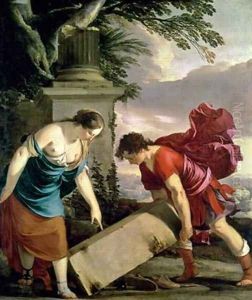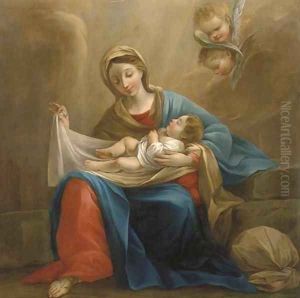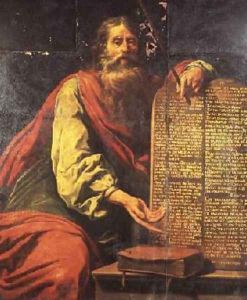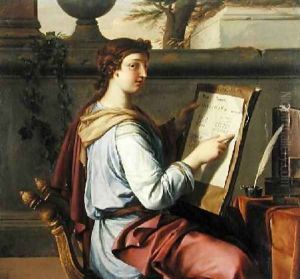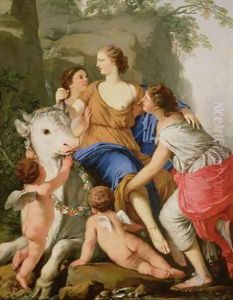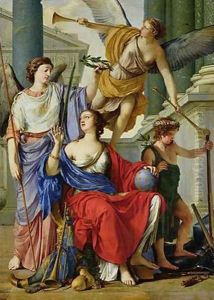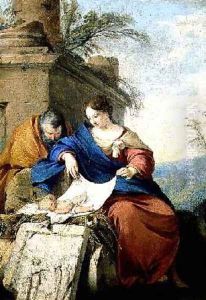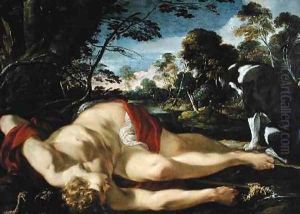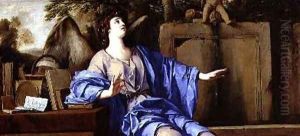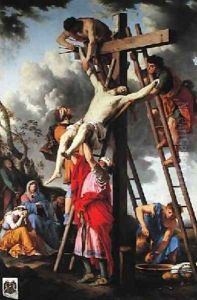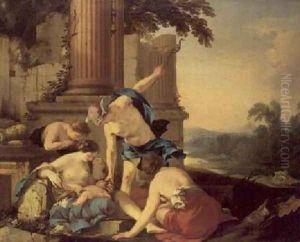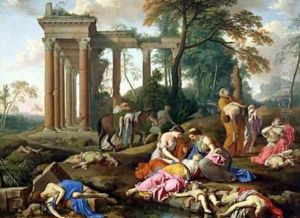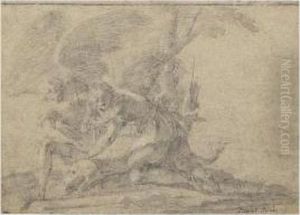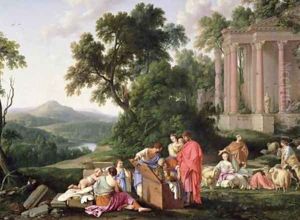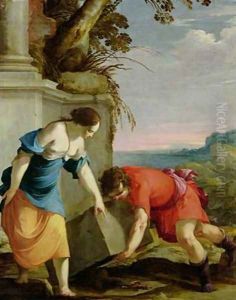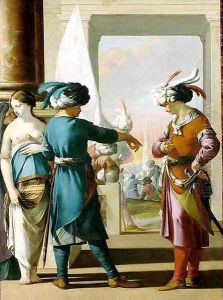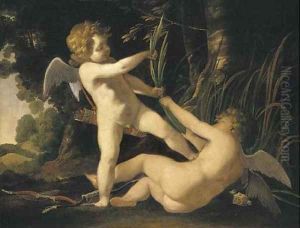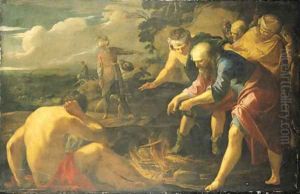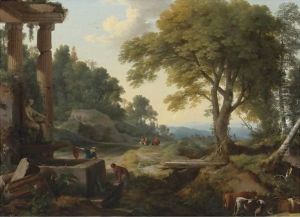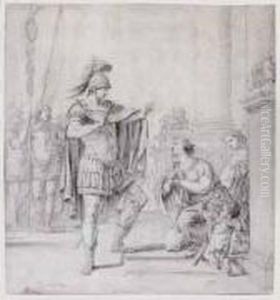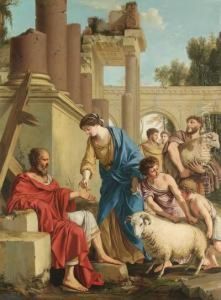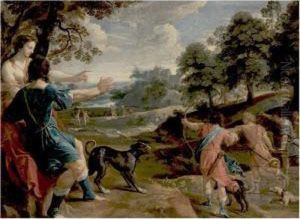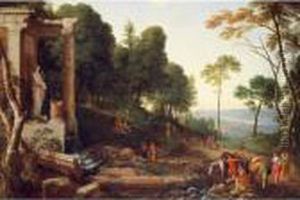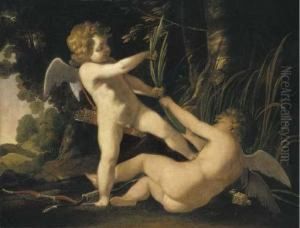Laurent De La Hyre Paintings
Laurent de La Hyre was a French Baroque painter, born on February 27, 1606, in Paris. He was considered one of the most important French painters of the 17th century, often associated with the classicizing tendencies of the French Baroque. His father was also a painter, which provided Laurent with early exposure to the world of art.
Laurent de La Hyre initially studied under his father, before going on to work with Georges Lallemand, a painter noted for his religious and mythological scenes. De La Hyre's style was influenced by the work of Italian artists who were active in Rome during the early 17th century, like Caravaggio and his followers, who were known for their dramatic use of light and shadow, as well as the classicism of painters like Raphael.
Throughout his career, Laurent de La Hyre painted a variety of subjects including religious narratives, mythological scenes, landscapes, and still-life compositions. His work is characterized by clarity of form, restrained color palettes, and a serene, often intellectual approach to subject matter. One of his most famous works is 'The Rape of Europa,' which showcases his strong drawing skills and his ability to create a balanced and harmonious composition.
In addition to his painting, de La Hyre was also involved in the design of tapestries and illustrations for books. He was a member of the Académie Royale de Peinture et de Sculpture and was well respected by his contemporaries. His influence extended to the next generation of French painters, including Charles Le Brun and Nicolas Poussin.
De La Hyre’s work reflects an intersection of the naturalistic approach of the early Baroque period and the classical ideals that became more prominent in French art later in the century. His paintings often convey a sense of calm rationality and order, which was a departure from the emotional intensity found in the works of many of his contemporaries.
Laurent de La Hyre passed away on December 28, 1656, in Paris. His legacy is preserved through his influence on the development of classicism in French painting and his contributions to the French Baroque style. His works can be found in various museums and collections around the world, attesting to his enduring significance in the history of art.
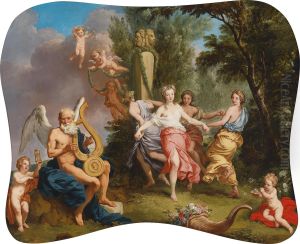
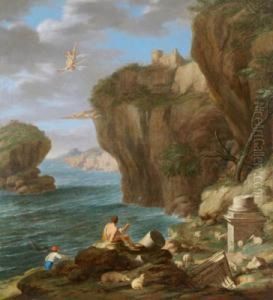
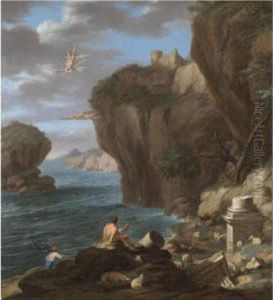
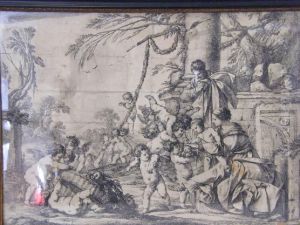
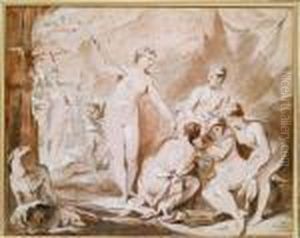
![Appartenant A Une Collection
Particuliere
Putti Tenant Une Guirlande De Fleurs [ ; Putti Holding A
Guirland Of Flowers ; Oil On Canvas ; Signed And Dated ; Unframed]](https://www.niceartgallery.com/imgs/1264268/s/laurent-de-la-hyre-appartenant-a-une-collection-particuliere-putti-tenant-une-guirlande-de-fleurs-putti-holding-a-guirland-of-flowers-oil-on-canvas-signed-and-dated-unframed-be2f7e0c.jpg)
